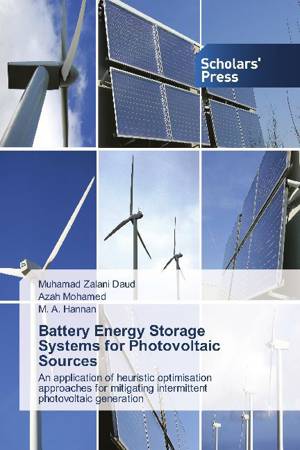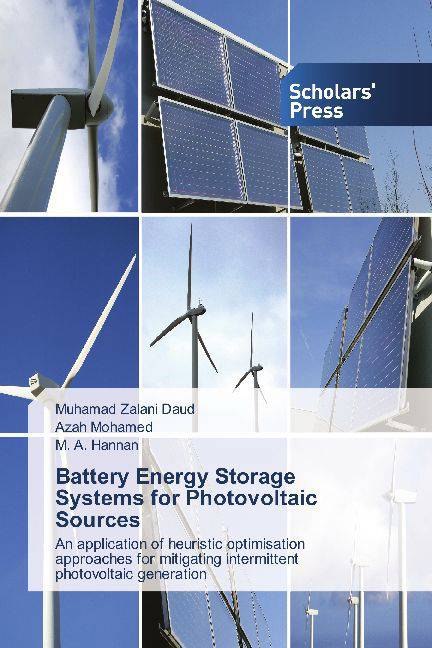
- Afhalen na 1 uur in een winkel met voorraad
- Gratis thuislevering in België vanaf € 30
- Ruim aanbod met 7 miljoen producten
- Afhalen na 1 uur in een winkel met voorraad
- Gratis thuislevering in België vanaf € 30
- Ruim aanbod met 7 miljoen producten
Zoeken
Battery Energy Storage Systems for Photovoltaic Sources
An application of heuristic optimisation approaches for mitigating intermittent photovoltaic generation
Muhamad Zalani Daud, Azah Mohamed, M A Hannan
Paperback | Engels
€ 78,95
+ 157 punten
Omschrijving
The generation intermittency resultant from a large photovoltaic (PV) system connected to the power network introduces many challenges and impacts in terms of power quality, stability, and reliability of the power network. There is a need to reduce or minimise the PV generation intermittency in order to integrate more PV generators and thus allows larger penetration of PV-based renewable resources to the utility network. In this book, storage technology has been used to provide solutions for the problems related to integrating the intermittent PV generation to the utility grid. The heuristic optimisation approaches of the control system in hybrid photovoltaic with battery energy storage (PV/BES) system are introduced which minimises the output power fluctuation of the PV system connected to the utility grid. While smoothing out the output of PV/BES system, the net power is dispatched to the power network on an hourly basis like a conventional generator.
Specificaties
Betrokkenen
- Auteur(s):
- Uitgeverij:
Inhoud
- Aantal bladzijden:
- 172
- Taal:
- Engels
Eigenschappen
- Productcode (EAN):
- 9783639662177
- Verschijningsdatum:
- 23/07/2014
- Uitvoering:
- Paperback
- Formaat:
- Trade paperback (VS)
- Afmetingen:
- 152 mm x 229 mm
- Gewicht:
- 258 g

Alleen bij Standaard Boekhandel
+ 157 punten op je klantenkaart van Standaard Boekhandel
Beoordelingen
We publiceren alleen reviews die voldoen aan de voorwaarden voor reviews. Bekijk onze voorwaarden voor reviews.











